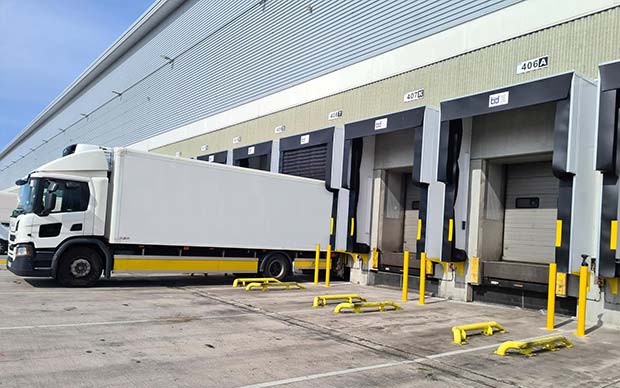When considering new or replacement loading bays for your facility, you may be wondering how to select the right size for your business operations. After all, given the volume of vehicle movements and tight deadlines involved the loading bay can make or break a logistics chain. In this guide, we will be explaining factors to consider when choosing loading bay sizes and the different options available.
 What Size Loading Bay Do I Need?
What Size Loading Bay Do I Need?
There are a wide range of models and truck dimensions, and it is common for vehicles of different heights to park in the same dock. This means you’ll need to accommodate all vehicle sizes when selecting your loading bay equipment. In order to determine the average height of the vehicles in your bays, you’ll need to look at the lowest loaded lorry and highest unloaded lorry that you frequently deal with (we would advise omitting occasional vehicles with extremely low or high floors when calculating average floor height).
Special vehicles e.g., refrigerated lorries will be taller, despite being built on the same frame as others due to the fact they have an insulated floor, so make sure to take this into consideration if you receive temperature-controlled goods. To accommodate these types of vehicles, you might wish to consider dedicating a certain number of docks to ensure efficient loading and unloading, featuring specific platform heights and longer dock levellers.
When thinking about loading bay sizes, it is essential to minimise the gap between the average lorry floor and platform height. Here are some examples of the most common lorry floor heights:
•Volume-transport: 450mm – 1,050mm
•Delivery vans/city vehicles: 450mm – 1,150mm
•Trailers/Refrigerated lorries: 1,150mm – 1,500mm
•Containers: 1,350mm – 1,600mm
It isn’t always possible to get the exact measurements of vehicles in your loading docks, however you can generally estimate. The most common platform height is 1,250mm, which tends to be suitable for most modern warehouses.
Letter Boxes
Lorries with hydraulic tailboards require a space under the dock leveller called a ‘letter box’. The tailboard then slides under the dock leveller into the letter box to allow unrestricted use to the leveller.
The letter box shoulder is roughly 3,000mm wide and has an appropriate slot to accommodate the tailboard length. Generally, we recommend a minimum depth of 2,400mm and a minimum height of 400mm depending on the chosen platform height, ensuring the letterbox is made accessible.
Distance Between Bays
It is also important to consider the distance between loading bays as they need to be big enough to allow parked lorries to open and close their doors easily. Standard loading bays should be at least 3,700mm, however, when accommodating wide lorries with open doors, this needs to be roughly 4,000mm and the recommended distance between the truck and loading pit edge is 1,500mm. Getting this right is important as having too small a gap can cause difficulty with parking and exiting the by.
Special lorries such as refrigerated lorries tend to have different values, with a distance of between 4,200mm and 4,400 mm in order to allow them to move in and out easily.
Loading Bays with BID Group
At BID Group, we are able to supply and install the most efficient and reliable equipment for loading bays and warehouse facilities. Specialist engineers are able to install, repair and service all types of industrial doors, high speed doors, dock levellers, dock shelters as well as gates, traffic barriers and associated equipment.
Simply tell us about your operations and we can provide you with bespoke loading bay solutions, including made-to-measure docks. Get in touch with our team today for a free site survey and quotation.




Comments are closed.